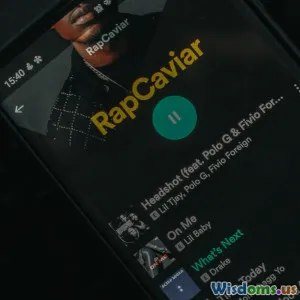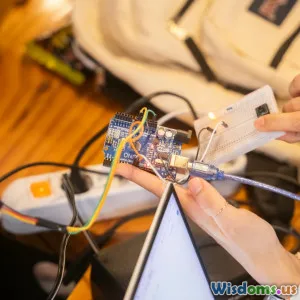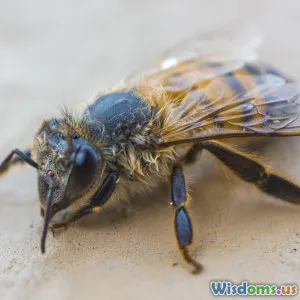
Why Does Your Flutter App Crash on Low RAM Devices
11 min read Explore why Flutter apps crash on low RAM devices and how to optimize performance for constrained environments. (0 Reviews)
Why Does Your Flutter App Crash on Low RAM Devices?
Flutter has soared in popularity as a robust framework for building beautifully designed, cross-platform mobile applications. Its promise of delivering near-native performance with a single codebase is compelling. But many developers encounter a frustrating hurdle: their Flutter apps crash or perform poorly on devices with low RAM.
In this detailed exploration, we delve into why this happens, shedding light on the unique memory demands of Flutter applications, common pitfalls that exacerbate crashes, and strategies for developers to mitigate these issues.
Introduction: The Flutter Appeal and the RAM Challenge
Flutter enables developers to craft expressive interfaces paired with high performance by drawing directly on Skia, a powerful 2D graphics engine. Its architecture—utilizing Dart for both UI and business logic—helps with rapid development cycles.
Yet, this rich UI framework opts to draw and compose almost everything in software rather than relying heavily on native widgets. While this delivers unparalleled design flexibility, it also places a heavier memory load on the device, especially visible on phones with limited RAM capacity.
According to Statista, average smartphone RAM has steadily increased over the years, with many high-end devices shipping 8GB or more. However, billions of users worldwide still operate on entry-level or mid-tier devices with as little as 1-2GB RAM—particularly in emerging markets.
This disparity means that any ambitious Flutter app risks becoming unstable or completely crashing on such hardware.
Understanding Memory Management in Flutter
The Dart Runtime and Garbage Collection
Flutter apps are compiled to native ARM or x86 code using Dart. While Dart enables high productivity, it also uses a managed runtime environment with a generational garbage collector. The GC reclaims memory but can sometimes contribute to jank or pauses, particularly if memory pressure rises beyond manageable limits.
On low RAM devices, every megabyte counts, and frequent garbage collection cycles triggered by a bloated memory footprint might slow the app and cause crashes due to memory exhaustion.
Flutter’s Widget Tree and Retained Memory
Each displayed Flutter component is represented as a widget, and an excessive or complex widget tree can consume considerable memory. For example, deeply nested or numerous ListView children without smart reuse mechanisms (e.g., ListView.builder) can result in unintended retention of objects in memory.
Image and Asset Handling
Flutter apps often rely heavily on images and custom assets, increasing RAM usage. Large or unoptimized images loaded into memory lead to inflated memory allocation. Devices with limited RAM can quickly run out if image caching is mismanaged.
Common Causes of Flutter App Crashes on Low RAM Devices
1. Excessive Memory consumption due to Images
Flutter's image rendering pipeline keeps decoded images in memory. For instance, using high-resolution images without proper compression or lack of lazy loading causes apps to allocate megabytes of memory rapidly. On a device with just 1GB of RAM, this can push the app beyond the OS’s limits, triggering a crash.
Example: A popular Flutter-based social app once faced rampant crashing on entry-level smartphones. The issue stemmed from high-res user-uploaded images being decoded and cached aggressively, leading to memory spikes.
2. Inefficient Widget Rebuilds
Improper state management can cause entire widget subtrees to rebuild unnecessarily. This results in rapid growth of objects awaiting garbage collection, further straining RAM.
Insight: Flutter's declarative style can fool less experienced developers into rebuilding too much on every state change. Coupled with low RAM, heavy rebuild cycles can exhaust memory quickly.
3. Orphaned Objects and Retained References
Memory leaks remain a threat. Some developers inadvertently hold references to large objects (streams, custom data models, big images) that prevent timely garbage collection.
Without a proper cleanup strategy, such retained memory accumulates until the OS kills the app to reclaim resources.
4. Overuse of Animations and Complex UI Effects
Animations and effects like shadows, gradients, and clipping vary in resource intensity. Overusing or poorly cascading multiple heavy visual effects can increase texture memory demand. Flutter renders many effects off-screen beforehand, consuming substantial RAM.
5. Background Services and Isolates
Flutter heavily relies on isolates for parallel processing. Although isolates isolate memory stacks, spawning many isolates or holding onto heavy data structures across isolates amplifies total memory consumption.
How Android and iOS Handle Low Memory and What It Means for Flutter
Both Android and iOS aggressively manage RAM by killing background processes and even foreground apps if memory pressure becomes critical.
On Android, LowMemory Killer (LMK) and OOM (Out Of Memory) killers target apps that exceed RAM thresholds. Flutter apps, with their higher baseline RAM usage, often fall victim.
iOS maintains stricter memory limits per app, but it also notifies apps about memory warnings. Without explicit handling—such as cleaning caches or freeing resources—apps risk termination.
Flutter's default integration with platform channels provides some hooks into memory warnings, but many developers neglect implementing proactive memory management.
Practical Strategies to Prevent Flutter App Crashes on Low RAM Devices
1. Optimize Image Loading
- Use
flutter_image_compressor tools like TinyPNG to reduce asset sizes pre-release. - Adopt
Image.networkwith caching, progressive image loading, and placeholders. - Utilize
ListView.builderandGridView.builderto create widgets on-demand, minimizing memory. - Consider packages like
cached_network_imagefor smarter caching behavior.
2. Efficient Widget Design and State Management
- Employ state management approaches like Provider, Riverpod, or Bloc to minimize unnecessary rebuilds.
- Break widget trees into smaller StatefulWidgets to localize state and rebuild impact.
- Use
constconstructors wherever possible, enabling widget reuse.
3. Detect and Fix Memory Leaks
- Use Dart DevTools Memory profiler to detect heap leaks.
- Dispose of controllers (e.g.,
AnimationController,TextEditingController) promptly indispose(). - Null out references to large objects when no longer needed.
4. Simplify Animations and Visual Effects
- Avoid complex multi-layer shadows or gradients that have huge overdraw.
- Test animations on low-end devices to assess performance and memory usage.
- Use
RepaintBoundarywisely to isolate repaint areas, saving resources.
5. Monitor and Respond to Memory Warnings
- On iOS, intercept
didReceiveMemoryWarningand clear caches. - On Android, use Platform Channels or plugins to detect memory pressure notifications.
- Implement application-level logic to release large resources under memory warnings.
6. Use Flutter DevTools & Profiling Early and Often
Profiling in realistic low RAM scenarios helps catch excessive allocations early. Analyzing snapshots can reveal retained objects, excessive rebuilds, or bitmap bloat before crashes happen in production.
Real-World Insights: Successful Optimizations
Consider Xapo, a fintech app that experienced crashes on Android devices with 1GB RAM. By profiling memory usage, they discovered large images were the principal culprit. By switching to progressive image loading using cached_network_image and compression, Xapo reduced memory footprint by 40%, eliminating crashes and improving user retention.
Another example is the volunteer team behind a news aggregator app who refactored their widget design and adopted Provider for state management. This reduced unnecessary widget rebuilds, cutting average heap usage nearly in half.
Conclusion: Building Resilient Flutter Apps for All Devices
Flutter's artistry and performance capabilities do come with complexity under the hood — especially regarding memory use. Low RAM devices present a formidable but navigable challenge.
Armed with a concrete understanding of Flutter's memory model and lifecycle, developers can make smarter design choices—from image optimization to state management, caching strategies to lean animations.
Proactive profiling and embracing platform-specific memory signaling enable your app to gracefully respect device constraints, resulting in reliable performance for all users, regardless of device capability.
Building Flutter apps that don't just dazzle on high-end devices but thrive even on entry-level hardware is crucial to reaching the broadest audience. The effort invested pays dividends in stability, user satisfaction, and global reach.
The next time your Flutter app crashes on a low RAM device, remember: it's not just a bug but a pointer to opportunities in efficient code and thoughtful design. Embrace the journey toward optimization—your users will thank you.
Rate the Post
User Reviews
Popular Posts




















